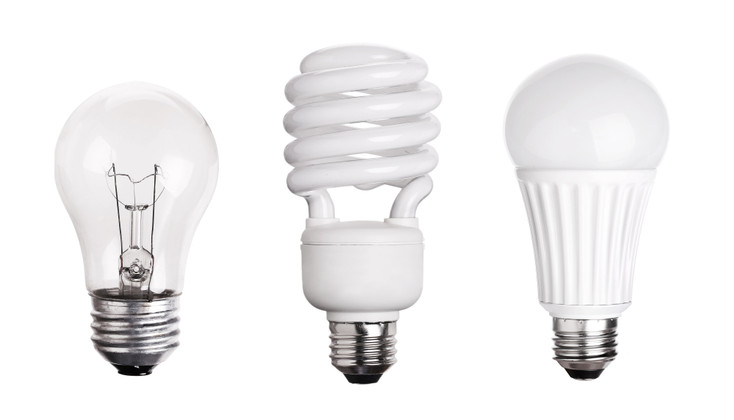
Halogen vs Led Bulbs: What Are the Differences?
04/04/22
If you're looking for some new lightbulbs, it's probably time to make a switch. You have no idea how much of a difference changing the lighting can make for your living space.
However, you may have questions about which lights are the best for your needs. Fortunately, we're here to help.
Let's talk about halogen vs LED bulbs and determine which is better for your lighting needs!
How Do LED Lightbulbs Work?
LED lights are completely different from any other lightbulb humans have developed. An LED lightbulb produces light by passing an electric current through a semiconducting material, known as a diode, which then emits light.
At the time, the technology was developed to prevent fire hazards, use less energy, and create a longer-lasting lightbulb. All of this was achieved by Nick Holonyak, Jr. who took the time to think outside the box. (Insert "lightbulb moment" joke here.)
The technology for these bulbs was invented in 1962 and wasn't ready for consumer use until the 1990s. Even then, you could argue, it wasn't exactly ready.
In the 90s and 2000s, LED lights were far too expensive for the average consumer to purchase. It was the difference between paying $1 for a standard incandescent bulb and $10 to $20 for an LED bulb.
Believe it or not, since 2008, the price of LED bulbs has dropped by more than 90% due to advancements in the production line and technology. Now, more people than ever are using them to light their homes.
How Do Halogen Lights Work?
So, what are halogen bulbs? Well, halogen lightbulbs use a tungsten filament that evaporates by releasing particles. When the released particles combine with halogen gas, it emits a bright light.
Moreover, halogen lightbulbs use reflectors in their bulbs to increase their brightness and directive lighting qualities. In 1959, General Electric patented the first halogen bulbs using iodine as the halogen gas.
Halogen lightbulbs beat Holonyak to the punch when it came to innovating a new lightbulb, as these were invented in 1959. Again, they didn't make their way into consumers' hands for a few decades, but they are now very popular for headlights, work lights, and outdoor lighting.
Halogen vs LED Bulbs
Okay, now that we know how they work, it's time to compare and contrast. Based on the factors most important to lighting, here are the key differences between LED lights and halogen lights.
Energy Efficiency
Without a doubt, LED bulbs are the most efficient lightbulbs on the market. Whether you're trying to save power for your car's headlights, lighting your home, or your business, halogens are not nearly as efficient as LED.
Now, that's not to say they aren't efficient at all. Both lighting systems are several steps up from incandescent bulbs.
Of course, incandescent bulbs are at the bottom of the totem pole, and halogens use around 20% to 30% less energy than incandescent bulbs.
However, LEDs run much cooler than incandescent or halogen lights, and they only use at least 75% less power (often over 80%) than incandescent bulbs, while lasting much longer.
If you are looking to save on your electric bill, reduce your carbon footprint, or even live off the grid, there's no competition. LED lights are by far the most energy-efficient on the market.
Safety
You probably know that incandescent bulbs can get hot enough to start fires or burn your skin. Because of the way they emit light, halogen lights burn even hotter than incandescent bulbs.
Conversely, LED lights run very cool and are unlikely to ever pose a fire risk.
Color/Display
Halogen and LED lights are actually fairly similar, both emitting bright, white lights from their source. If you've seen the two on car headlights, you know that they are both bright white while LED headlights tend to look a little more "futuristic."
Well, this effect is created because car manufacturers have created unique designs for these headlights, often having to make them thinner because of their brightness. In terms of getting the most brightness for the least energy, LED lights are far superior.
Also, halogen lights are known to emit, albeit limited, UV light, which is harmful to our health. While the UV light emitted is minimal, LED lights emit none.
Moreover, halogens are also far more limited in their abilities. For example, if you want string lights or rope lights, you will need to use LED bulbs or something else, as there are no halogen options.
Price
Again, both options are much better than incandescent bulbs, so switching to either will show a dramatic difference. However, there is a clear winner here.
In terms of upfront costs, halogen lights are cheaper, costing only around half of the LED bulbs.
However, LED bulbs save so much more money in the long run, that the upfront costs will pay for themselves within weeks.
For comparison, halogen lights use an average of around 90 watts of electricity to run and they last for between 800 and 1,200 hours.
Conversely, LED lightbulbs use only 8 watts of electricity on average and last for between 50,000 and 60,000 hours.
Moreover, that means that if you ran them consistently, halogen lights would last between five and seven weeks, whereas LED lights would last for up to seven years. There's a reason why 29% of households now primarily use these bulbs, and that number is only growing.
Light It Up
Now that we've settled the debate between halogen vs LED bulbs, you can see that there's a clear winner. Start lowering your electric bills, reducing your energy consumption, and brightening your space today by shopping for the best LED lights.
Stay up to date with our latest lighting news and feel free to contact us with any questions!


